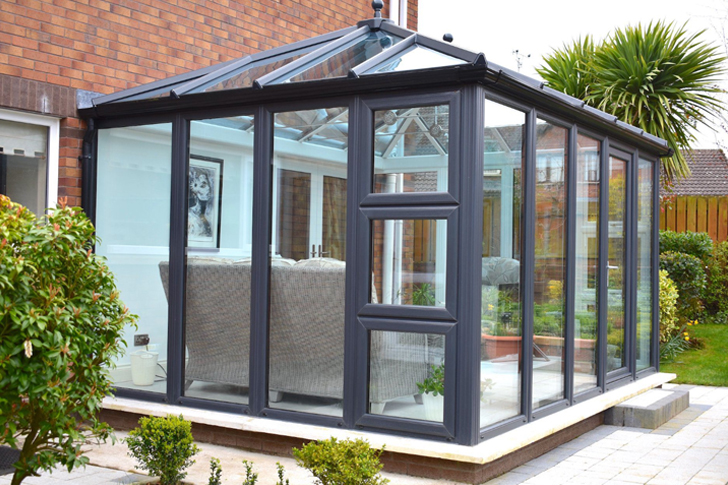Evaluating Budget and Options for a Conservatory
Adding a conservatory to your home can be an exciting project that not only provides additional living space but also potentially enhances the value of your property. Whether you’re looking for a serene retreat to enjoy your garden regardless of the weather or an elegant space for entertaining, a conservatory can be a beautiful and functional addition. In this article, we will explore the key considerations in budgeting for a conservatory, along with options available to tailor the project to suit your needs and finances.

Understanding the Costs of Building a Conservatory
Before embarking on adding a conservatory, it’s crucial to have a clear understanding of the potential costs involved. Generally, the price of building a conservatory can vary significantly based on factors including size, materials, and complexity of design. On average, the cost of a conservatory in the U.K. ranges from £10,000 for a basic model to over £40,000 for a large, custom-built one. Factors influencing this price include the type of glazing, the material of the framework (such as uPVC, aluminum, or timber), and whether you opt for a bespoke design or a standard module.
Choosing the Right Type of Conservatory
There are several styles of conservatories to consider, each offering a different aesthetic and set of benefits. The Lean-to conservatory, with its simple design, is one of the most popular and cost-effective options. It’s particularly suitable for bungalows or houses with limited outdoor space. On the other hand, Victorian and Edwardian styles, known for their ornate roofing and spacious feel, can be more expensive but add considerable charm and character to a property. More contemporary designs often feature bespoke architectural elements such as bi-folding doors or lantern roofs, which can increase the overall cost but offer a modern and luxurious feel.
Material Choices and Their Impact on Budget
The choice of materials can significantly affect both the cost and the performance of a conservatory. Polycarbonate roofing is the most cost-effective option, while glass roofs are pricier but provide better insulation and aesthetic appeal. When it comes to frames, uPVC is typically the cheapest, durable, and low-maintenance choice, albeit with limited color options. Aluminium frames, while more expensive, offer strength and slimline profiles. Timber frames offer a classic look but require more maintenance and can be the most costly. Each material offers different levels of thermal efficiency and maintenance requirements, which can influence long-term savings and usability.
Flooring and Interior Finishing: Budget Considerations
Interior finishing, including flooring, can also be a significant factor in your conservatory’s overall cost. Tiled flooring might be ideal for durability and maintaining a stable temperature, but can be more expensive than laminate or carpet options. Additionally, underfloor heating might be a luxurious add-on but adds to initial costs and running expenses. Consider your usage patterns and climate to choose the right flooring. Employing blinds and shades can help control the temperature but also add to the cost — automated blinds, for instance, offer convenience at a higher price point.
Regulations and Planning Permissions
Before construction begins, it’s necessary to understand local regulations and whether planning permission is required for your conservatory. In the UK, conservatories often fall under permitted development rights, but this can vary based on the size and style of the extension, as well as the specifics of local council regulations. Ensuring compliance from the start can help avoid costly modifications or legal issues later on.
Choosing the Right Contractor
Selecting an experienced and reputable contractor is crucial for ensuring the quality and durability of your conservatory. It’s wise to obtain multiple quotes and check references and previous work portfolios. A good contractor will also help navigate planning permissions and potentially suggest cost-effective solutions or alternatives. While it may be tempting to go with the lowest quote, it’s important to consider the quality of materials and construction, as these will affect the long-term value and enjoyment of your conservatory.
Return on Investment
While the upfront costs can be significant, a well-designed conservatory can offer a good return on investment by adding to the overall value of your home. According to some estate agents, a conservatory can add up to 7% to your home’s value. Additionally, it enhances the usability and aesthetic appeal of your living space, which, while not quantifiable monetarily, can significantly contribute to your home’s enjoyment.
Conclusion
Building a conservatory is a considerable investment that requires thoughtful planning and budgeting. By understanding the various factors that influence the cost, selecting appropriate materials, and choosing a qualified contractor, you can ensure that your conservatory meets your expectations and enhances your home’s value and functionality. Although the initial expenditure might seem high, the additional space and aesthetic appeal typically yield long-term benefits, making it a worthwhile addition to any home.







Recent Comments